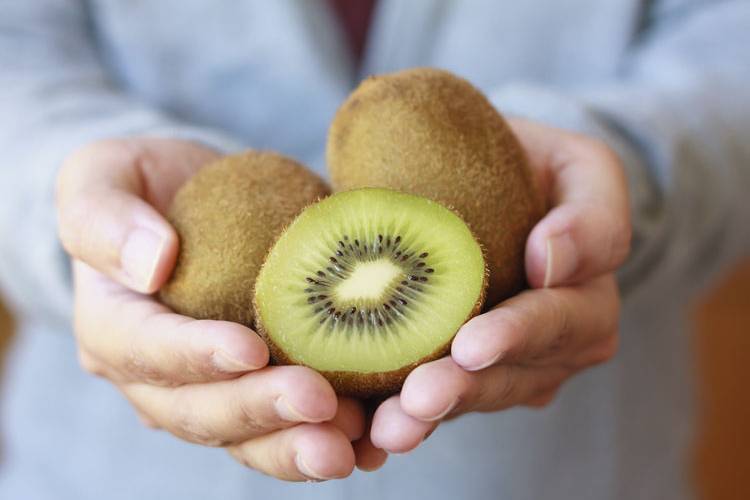Kiwi, a tasty and nutritious fruit
fresh food
Share
For a mid-morning snack, for lunch, just before going to the gym…The kiwi is an ideal fruit for any time of day. Thanks to its properties, it fills us with vitality and gives us the energy we need to carry on with our daily routine.

The kiwi is one of the best known and most consumed fruits. It is an oval fruit with brown skin and bright green flesh with black seeds, although there are also other varieties with yellow flesh. It grows on climbing plants adapted to warm climates and they appear in bunches.
Origin
Although the kiwi originates from China, it was New Zealand farmers who made it popular, even giving it the name of the emblematic bird of this country. At the end of the last century, this fruit arrived in Europe, where its cultivation and consumption has skyrocketed.
Nutritional properties
According to a study published by the Journal of the American College of Nutrition about the nutritional value of 27 fruits, the kiwi is the most complete, since it scored the highest points (16), followed by papaya (14), mango and orange (11), apple (10) and many more.
- Rich in Vitamin C and antioxidants: Green kiwis contain more vitamin C than an orange and twice as much as alemon and yellow kiwi. Three times morethan a lemon! Furthermore, vitamin C protects our cells fromoxidation and helps the normal working of the immune system. Eating two medium kiwis meets the dailyrequirements of vitamin C for an adult.
- Helps digestion: Having a high quantity of fibre and, in addition, being the only fruit containing actinidine (soluble protein enzymes), it helps us to digest protein (for example, in meat, dairy, soy) and stimulates the digestive process.
- Rich in fibre: It benefits bowel transit and it is recommended that we include it inour daily diet.
- Low in calories:The kiwi is a fruitwhich is low in calories (57 Kcal/100 g), high in water content, and low infats and saturated fats, highly recommended for any type of diet.
- A natural source of folic acid: Highly recommended during pregnancy, vitamin B9 helps the growth of maternal tissues during the pregnancy.
- Low glycaemic index: Kiwis have a lowglycaemic index (GI) so the body doesn’t break down carbohydrates as quicklyand the glucose is only partially released into the bloodstream, reducing therisk of suffering from diabetes and heart conditions.

Buying and preservation tips
Nowadays we can find kiwi on the market all year round. The Spanish production is sold from October and lasts practically until May, and the production coming from New Zealand can be eaten from the end of May until the beginning of November.
The best ones are those that don’t have dark spots or bruising, therefore, it is best to choose the ones that are smooth. Once we get them home, it is best to keep the kiwis in a cool place. In the open air they will last up to 7 days, up to 2 weeks in the fridge, if they are green, and a bit less if they are yellow, and they can last up to 6 months when frozen.
Its use in the kitchen
Although the most common way to eat kiwi is cutting them in half and eating them with a spoon, they can also be peeled and cut into slices or pieces to mix with yoghurt or salad. However, to make more use of them, why don’t you try some of these recipes?
- Strawberry pudding with kiwi sauce: http://bit.ly/budinkiwifresa
- Banana and kiwi milkshake: http://bit.ly/batidoplatanokiwi
- Cream of yogurt and kiwi: http://bit.ly/cremayogurkiwi
- Kefir flan with fruit: http://bit.ly/flankefirconfrutas
Did you know…
- You can eat a kiwi whole, with the skin, which gives us much more fibre. You only need to remove the fine hair that covers it with a brush and wash it first.
- If it’s very green and we want it to ripen quicker, we can store it in a bag next to apples or pears because they give off ethylene which speeds up the natural ripening process.






